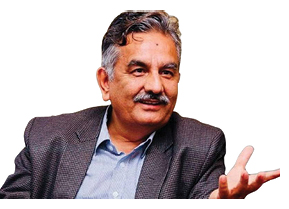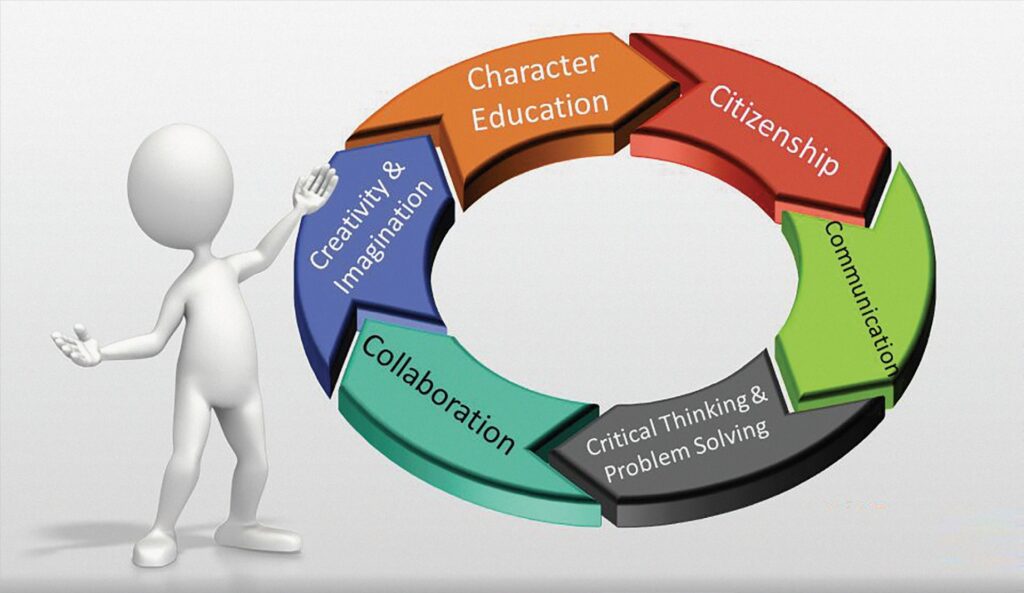
One can simply compare our social, economic and political path with that of the rest of the world. In the 1930s, the globe was gripped by an economic crisis, also known as the Great Depression. Before this crisis, two main economic philosophies prevailed: a highly regulated, less market-based system where the state was heavily involved in distribution, and a capitalist system that relied heavily on the market and opposed government regulation.
The crisis hit capitalist countries particularly hard, with the exception of the Soviet Union. The nations most affected included those in North America, Europe, and some parts of East Asia. During this time, John Maynard Keynes (1883-1946) argued that capitalist liberal economies had no other choice but to reform. He then advocated for a ‘liberal economic state’, which proposed that government intervention in the market and a crucial government role in employment generation were necessary. This perspective became the dominant opinion from the 1940s to the 1970s.
It was a decisive viewpoint because institutions like the United Nations (formed in 1945) and the Bretton Woods twins – the World Bank and the International Monetary Fund (formed in 1944) – promoted liberal welfare policies. They had identified the risk of capitalist economies: that market inequality could lead to a revolution. Communists, they feared, could then take advantage of such a revolution.
The First World War led to the revolution in Russia, and the Second World War led to revolutions in Eastern Europe and China. It was believed that if capitalist countries failed to increase the state’s role in regulating the market and creating employment, uncontrolled markets and high unemployment could trigger despair among a large number of people who were deprived by the capitalist system. This despair, in turn, would provide a fertile ground for a communist revolution, which would ultimately be the death of capitalism.
Nepal was also influenced by this policy. For example, the late former King Mahendra established corporations and increased the government’s role in creating jobs, regulating the market through price controls. When a government corporation supplies goods and services to the market, private sector businesses can’t raise their prices or sell inferior products.
If the government keeps wages high, the private sector is unable to hire people at low rates and is forced to increase their wages. This led to a new market equilibrium and was a central tenet of the liberal welfare economy.
In Nepal, several public corporations were established, including Himalaya Cement, Udaypur Cement, Transport Corporation, Nepal Airlines, National Trading, and the National Construction Company Nepal (NCCN) among others.
However, following the Vietnam War in the 1970s, American economists and policymakers concluded that the liberal welfare state was unsustainable due to the heavy financial burden on governments. Economists like Friedrich Hayek and Nobel laureate Milton Friedman suggested lowering the burden on the government.
The policies adopted by the United States essentially became global policies, transmitted through international platforms where the U.S. had significant control. At the same time, increased labour wages made state-run manufacturing industries in America unviable in the local market.
In response, the U.S. adopted a policy of financial liberalisation and began sending these industries abroad through outward foreign direct investment. American manufacturing industries subsequently shifted to Japan, Singapore, South Korea, Malaysia, and later to China and countries in Latin America, among others.
By this time, the United States and the former USSR were leading two competing blocs. The Soviet Union was not a part of the Bretton Woods agreement.
In spite of that, two economic policies were in competition: the capitalist economy and the capitalist, liberal welfare economy. The liberal welfare policy eventually became obsolete.
Today, President Donald Trump has been urging these industries to return to the United States. However, this is not a feasible option because of the high cost of production. If these industries were to return, private sector companies would not be able to generate a reasonable profit and thus could not sustain themselves.
When the liberal welfare economy became obsolete in the 1970s, the market-led liberal policy took its place. Nepal was also influenced by this shift. In 1984, the country adopted the Structural Adjustment Programme, and after the dissolution of the Soviet Union in 1990, the socialist economic bloc could no longer sustain itself.
Karl Marx and his followers believed that capitalism could not succeed in developing countries. Marxists believed that society went through various stages: a primitive communist society, which gradually transformed into a slave society, then feudalism, capitalism, and socialism, with the ultimate goal of achieving communism through socialism. However, because the capitalist class compromised with the feudal class and these two forces moved forward together, there was no room for a peaceful transition to capitalism. The alternative, they argued, required a new revolution led by the working class (proletariat) to achieve capitalism by defeating both the feudal and capitalist classes.
The peaceful transition to capitalism in countries like South Korea and Malaysia has proven that capitalism can also be achieved through capitalist forces. Therefore, when we look at our own country, where are we heading? We made changes by ousting the feudal monarchy with the help of the Nepali Congress. A republican constitution was promulgated, and the Parliament became the supreme law-making body. Since we are reforming laws through parliamentary processes, we are largely a capitalist country.
Today, the entire world, including China, operates mostly within the framework of a liberal economy. When China began its reform programme in the 1970s, it also became a part of the World Bank and the IMF. Until 1971, China was not even a member of the UN but it later gained membership and a seat on the Security Council. The United States has since accepted the ‘One-China’ policy, and they have opened up trade and investment with each other’s countries.
Today, Overseas Development Assistance (ODA) is based on debt, not grants, and this also applies to Nepal. Countries largely follow the debt framework of the IMF, which comes with conditions. These conditions dictate that we cannot restrict our market to other countries, impose high tariffs, or fail to facilitate customs, among other things.
This is why we are all in the same boat and must develop our country from within this system. Against this backdrop, we should not be confused about whether to move toward a liberal welfare or Keynesian model. Both socialists and capitalists (bourgeois) favour strengthening the role of the state.
Nepal’s bureaucracy developed with the mentality that the state must deliver all goods and services. Even though we shifted our approach from a liberal welfare state to a liberal, market-led economy, the government has been slow to transform.
In this context, we need to deregulate the market and streamline our policies to support the development of the private sector. We are no longer seeking grants, as we did under the liberal welfare state; instead, we are pursuing investment, both foreign direct investment (FDI) and domestic private sector investment.
FDI brings not only capital but also complementary skills, knowledge and technology. Unless we attract FDI and promote domestic investment, we cannot achieve our desired growth. A tax-based, redistributive model is not enough. If we continue to promote a ‘rowing’ government that directly runs services, we cannot move forward.
For this reason, any leadership that promotes a ‘rowing’ government will be counterproductive. Although we have politically transformed, continuing to advocate for a larger government structure in production and distribution will not be beneficial. If we want the government to be involved everywhere, it should regulate; if not, it must deregulate and promote the private sector.
There are different ways for the state to maintain a strategic role, such as promoting public-private partnerships. For example, hydropower projects developed by private companies will revert
to government ownership after 30 years of operation. The same model can be applied to road and transport infrastructure.
If you involve the bureaucracy in infrastructure development, there will be delays, inefficiency, corruption and rent-seeking. If the same projects are carried out by the private sector, they will be more efficient and completed on time because every single day of delay is a loss of revenue for them.
We call a hydropower project ‘government-owned’ if it is developed by Nepal Electricity Authority. If the same project is built by a private developer and handed over to the government after 30 years of operation, it is more beneficial for the government. This is because the government does not have to invest a large sum or deal with the hassles of procurement, corruption, delays or cost overruns. If the bureaucracy is involved in enforcing such projects, they can cause problems with rent-seeking and corruption.
The old idea of government intervention for job creation and market control is no longer relevant. The government does not need to act as an employment creator, as there are many opportunities in the private sector. If there are capable and efficient people in the government, we can increase their incentives by reducing the number of bureaucrats.
Therefore, we need to move toward a lean and efficient government with a capable bureaucracy.
To achieve our goal of a prosperous Nepal or to reach the ideal stage of capitalism, there is no alternative to attracting FDI and domestic private sector investment. Once our economy grows and we have sufficient resources, we can transform into a socialist or welfare state like the Scandinavian countries. Without being bound by ideologies, China can be seen as a capitalist country and the U.S. as a socialist country in terms of the role of their governments and market functions.
Nepal, without being confused about creating a larger government structure, should focus on attracting more investment to exploit its potential. Otherwise, we will fall into a middle-income trap and become stagnant.
[Former finance minister Pandey is vice chairperson of CPN (UML)]



